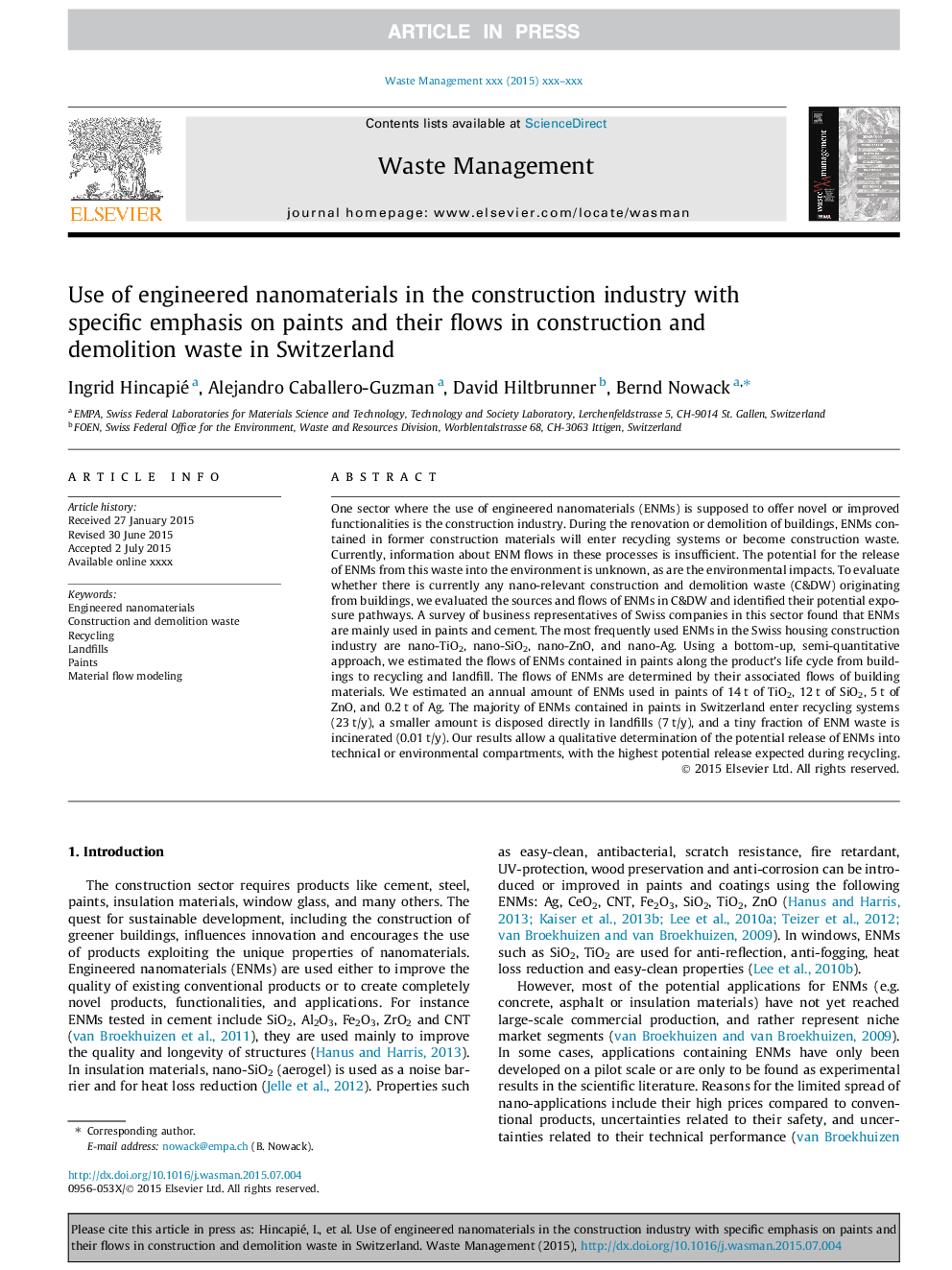| Article ID | Journal | Published Year | Pages | File Type |
|---|---|---|---|---|
| 6353983 | Waste Management | 2015 | 9 Pages |
Abstract
One sector where the use of engineered nanomaterials (ENMs) is supposed to offer novel or improved functionalities is the construction industry. During the renovation or demolition of buildings, ENMs contained in former construction materials will enter recycling systems or become construction waste. Currently, information about ENM flows in these processes is insufficient. The potential for the release of ENMs from this waste into the environment is unknown, as are the environmental impacts. To evaluate whether there is currently any nano-relevant construction and demolition waste (C&DW) originating from buildings, we evaluated the sources and flows of ENMs in C&DW and identified their potential exposure pathways. A survey of business representatives of Swiss companies in this sector found that ENMs are mainly used in paints and cement. The most frequently used ENMs in the Swiss housing construction industry are nano-TiO2, nano-SiO2, nano-ZnO, and nano-Ag. Using a bottom-up, semi-quantitative approach, we estimated the flows of ENMs contained in paints along the product's life cycle from buildings to recycling and landfill. The flows of ENMs are determined by their associated flows of building materials. We estimated an annual amount of ENMs used in paints of 14Â t of TiO2, 12Â t of SiO2, 5Â t of ZnO, and 0.2Â t of Ag. The majority of ENMs contained in paints in Switzerland enter recycling systems (23Â t/y), a smaller amount is disposed directly in landfills (7Â t/y), and a tiny fraction of ENM waste is incinerated (0.01Â t/y). Our results allow a qualitative determination of the potential release of ENMs into technical or environmental compartments, with the highest potential release expected during recycling.
Related Topics
Physical Sciences and Engineering
Earth and Planetary Sciences
Geotechnical Engineering and Engineering Geology
Authors
Ingrid Hincapié, Alejandro Caballero-Guzman, David Hiltbrunner, Bernd Nowack,
